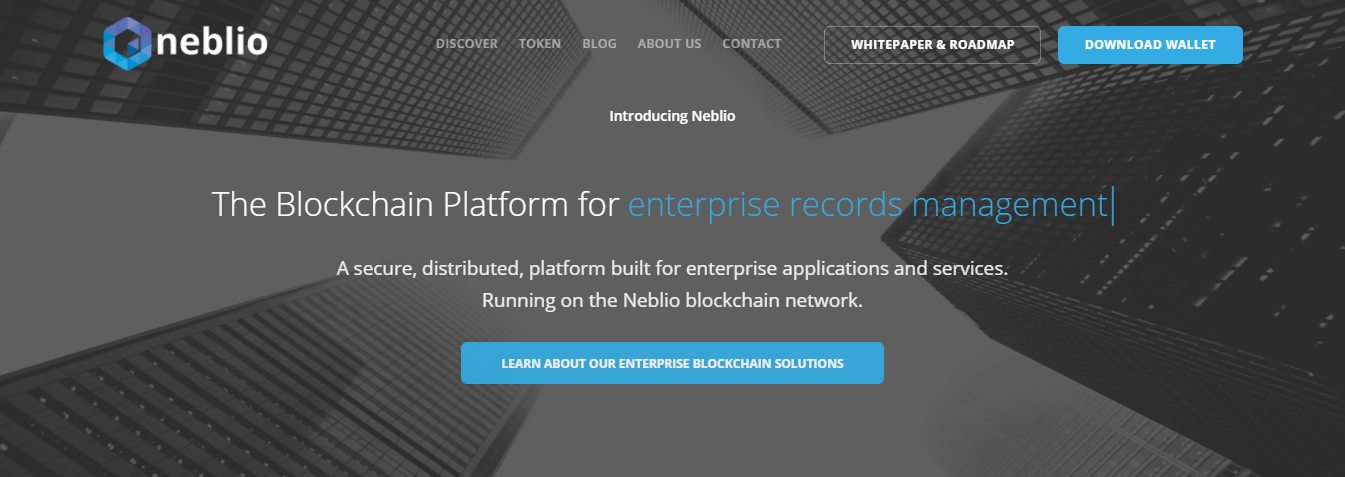Even with all of the innovation potential that the blockchain space has to offer, it is quite striking to see that developers are not making full use of the crypto domain due to factors such as the cost of integration and maintenance. However, with the rise of next-gen blockchain networks, it seems that the development and deployment of dApps will become significantly easier and more streamlined.
Neblio can be thought of as being a decentralized peer-to-peer network of nodes designed to facilitate the exchange of information via a proprietary transaction module. What makes this platform unique is that it stores transactions on an immutable distributed ledger, thereby allowing each individual node to possess a copy of the ledger at all times.
While legacy blockchain networks have become immensely popular worldwide, they seem to have stagnated and been relegated to the realm of transactions and payment solutions. In contrast, Neblio is a new blockchain solution that focuses primarily on fostering technological innovation to support the needs of large enterprises globally. Its intuitive blockchain platform and developer ecosystem can help facilitate the rapid utilization of dApps that utilize distributed ledgers instead of traditional database architectures.
Overview of Neblio
- Utilizes the Proof of Stake consensus module
- Serves as a channel of communication between IoT-based digital devices
- Utilizes a secure information management protocol that ensures data is protected at all times
- Provides large businesses and enterprises with a host of design and dAPP construction options
- Has an easy-to-use UI
Key Features

When looking at the digital architecture of the Neblio public network, it becomes clear that the platform possesses an incentivized model to run its node system. Additionally, it employs a security protocol that protects the network from third-party miscreants. To further elaborate, native Neblio tokens are staked by trusted parties that set up the private network. As a result, the network is as trustworthy as the individual parties that use it.
Unlike traditional database storage services, the Neblio blockchain makes use of various advanced architectural modules that allow for distinct advantages such as:
- Streamlined records management
- Easier auditing
- Safer life cycle verification
All of this is possible due to the fact that key information is always stored on this blockchain via additions, rather than through the modification and recycling of existing data. Moreover, dApps will be able to view any version of the information by simply visiting the required block within the network.
Also, Neblio’s scalable framework makes it perfect for enterprise and business customers running Tier 1 applications, as transactions can be processed in a much faster manner.
Neblio nodes are meshed with each other through the use of relaying blocks. Each individual node possesses a copy of the entire blockchain, thereby dramatically increasing the performance of dApps built on the network.
Lastly, the global scale on which the Neblio network has been envisioned and designed aims to provide good overall resiliency. The nodes have the ability to join or leave the network at will without having any major effect on the overall performance of the network.
How does Neblio work?
The Neblio platform utilizes a mesh network wherein each node that would like to record information within the ledger has to start by broadcasting the transaction throughout the network. As a result, all of that information will be relayed to all other nodes on the blockchain.

Visual representation of the mesh framework employed by Neblio
Subsequently, a chosen node within the network will be required to compile all new available transactions on the network, which will then be added to the blockchain. This action is non-reversible, and every time the ledger needs to be updated, a new transaction will be added to the blockchain rather than the previous information being altered.
The APIs currently being developed for the Neblio platform are open source-based and simple to use. Developers who are adept at using RESTful APIs will be able to switch to the Neblio API suite without much difficulty.
Lastly, in order to foster innovation, the Neblio API suite will support uniform core APIs that are most commonly used by some of today’s popular programming languages including Python JS, .NET (C# and VB.NET), Objective-C, Java, Node.Js, Go and PHP.
About Neblio
Neblio was established in the first quarter of 2017 and has since gained a significant amount of traction within blockchain circles worldwide. It is headed by lead developer Eddy Smith who holds a bachelor’s degree in computer science and has nearly a decade’s worth of experience in the software development domain. Ann Jackson is the project’s business ops manager. She holds an MBA and has previously worked as a head for various supply chain operations, marketing, and business teams.
Token Performance history
Since its inception, the NEBL token has seen a steady rise in its market value.

NEBL token lifetime performance chart (courtesy of CoinMarketCap)
While it launched at a price of US$6 per coin, NEBL saw its value soar to a peak of US$44.09 on January 6, 2018. However, the price has since stabilized, and the value of a single token stands at US$13.52 as of February 13.
Final Thoughts
With Neblio offering users next-gen blockchain services such as easier dApp development and faster transactions, it will be interesting to see how the market responds to this platform in the near future.
As seen in the token performance chart, NEBL has huge monetary potential. However, past market performance should never be the sole driving force behind one’s investment decisions.
If you’d like to start investing in Neblio, NEBL trading pairs are currently being offered on Binance.

